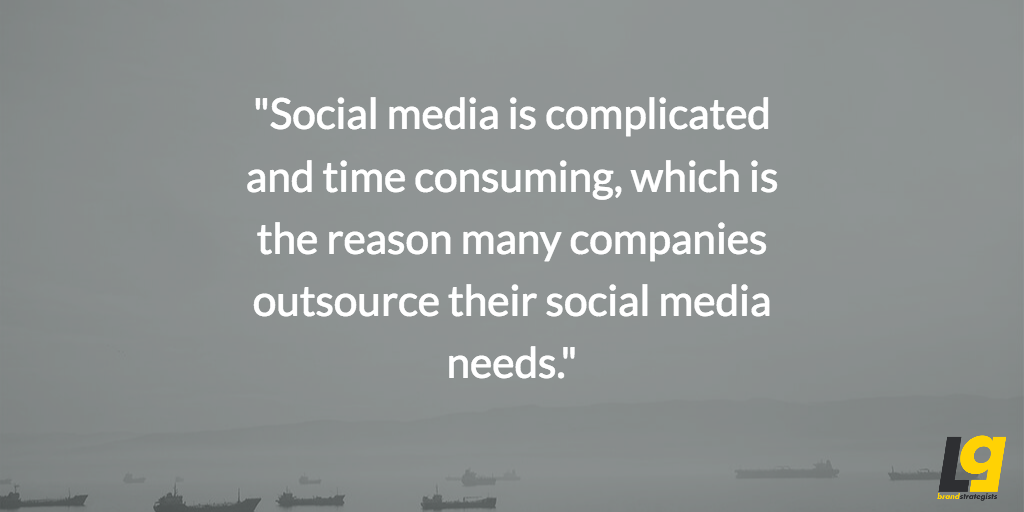Social Media Mistakes Marketers Make

Terminology: When describing to clients social media terminology you’d be surprised how some marketers explain terms incorrectly. For instance, Twitter's potential reach is one of the most commonly misunderstood social terms. When submitting social analytics to explain ROI to clients, you will most likely include “reach” as one of your social parameters to showcase how many people your content reached. In some cases you will see a significant amount of reach, over a million users at times. No, your tweets did not reach over a million users. Twitter reach is the potential amount of people who could have seen your tweet based on how influential each user who interacts with your content is (influence = how many followers they have). For instance, the USGBC retweeted your LEED Gold project tweet and your potential Twitter reach for that particular tweet is 105,000 users, which equals the amount of followers of USGBC’s Twitter handle.
Blogging: Third party blogging platforms are great, especially for individuals showcasing thought leadership in a particular industry. Yet, for a business, it is much more efficient for the blogging platform to live within your company’s website. This is especially crucial for companies in the construction products industry whose websites equate to their lead-generating mechanism. The ability to order product samples or to fill out contact information forms are how most companies in this industry track leads and push architects/designers/building contractors further down the sales funnel. Still, having a blog on your website is only a small portion of the blogging battle, the next step is to blog correctly.
Blogging Part 2: Once your website blog is created, your company needs to produce relevant, engaging, keyword-rich content on a consistent basis. Consistency is key. If you are only able to produce one blog post every few months you won’t see the full benefits of blogging, which are thought leadership, referral traffic, search engine optimization and of course, leads. We usually recommend that clients produce blogs on a weekly basis. Obviously the more content you have, the better, but weekly is a manageable amount of content. If your company is not able to produce that amount of content, there are companies who assist in content creation.
Analytics: With the technology available today, marketers have the ability to quantify social in a way that five years ago did not exist. Each outlet now has internal analytics systems (Twitter, Facebook, YouTube, Pinterest, Flickr, etc). These systems, in addition to utilizing external sources as well, allow you to quantify what content at what time on what days of the week are working best for your company. Do not ignore this data. Social media remains social in nature, the ability to like, share, retweet, comment and mention your brand or content is the core foundation of why these outlets exist. These companies have created analytical systems that can be used to get the most out of your social media marketing strategy. For instance, for one of our clients we know hands down that their tweets focused on sustainability always do the best. We know this because we can track how many users interacted with the content, how many web referrals the company received from a given post, and if their samples or contact forms increased for that time. That indicates to us that this is a category of content we should post often.
Social Media Marketing Plan: Social media is a component, an important one, but a component of your encompassing marketing plan. Whether that plan includes print or digital advertising, banner ads, webinars, podcasts or something other, social media should reflect your brand's message. Your marketing plan is comprehensive and should include every outlet, inbound and outbound, that will help your brand achieve its goals. Treating your social media as an entirely separate entity from the rest of your brand creates confusion and defeats its purpose.
Goals: I’m often asked, "should I join Facebook, or Twitter or how about YouTube." My answer is always the same…what do you want to achieve from social media? Are you looking for thought leadership, brand awareness, website referrals, or maybe even leads? Each social media outlet is unique in its ability to achieve your brand’s goals. It takes marketers, when done correctly, weeks to decipher which outlets you should join. This decision is based on your discussed goals and other equally important factors such as competitive and prospective audience usage of each.
There is a common misconception that social media is easy, often passed along to the youngest person in a company to take over amidst their other non-related duties. In reality, social media is complicated and time consuming, which is the reason many companies outsource their social media needs. It is important to know that this ever-changing medium is just that, ever-changing; new outlets, new systems, new data, constantly. Often peer pressure is the reasoning behind a company’s social media presence, joining because everyone else is. But, these outlets require more than just presence, they require time, research and commitment.
Previously featured on Design And Build With Metal.
